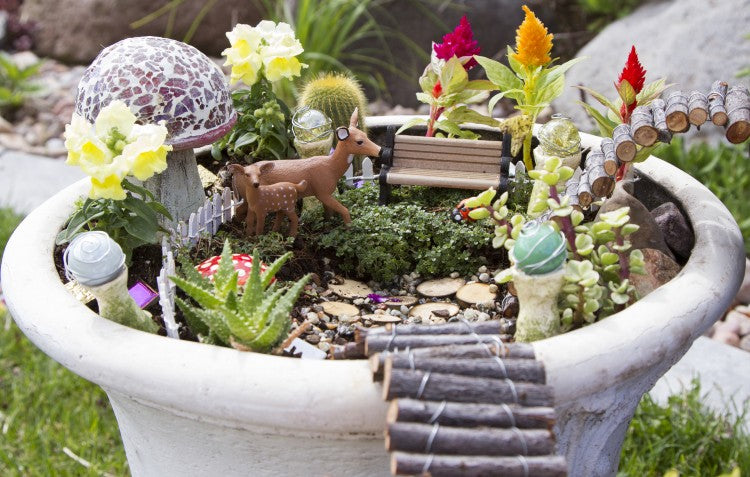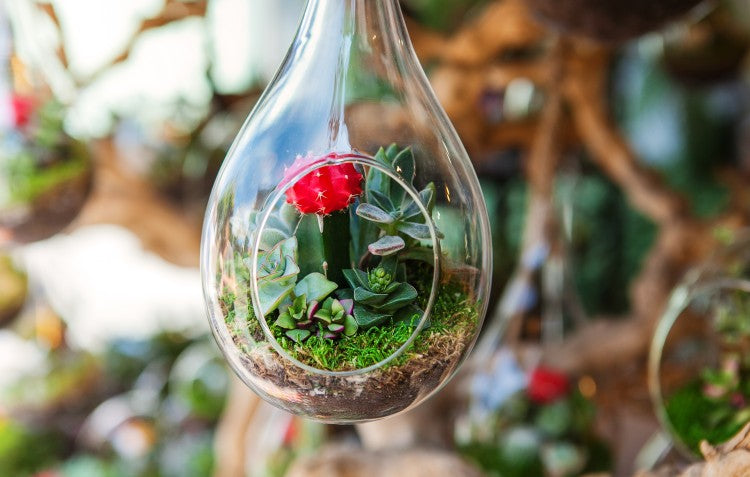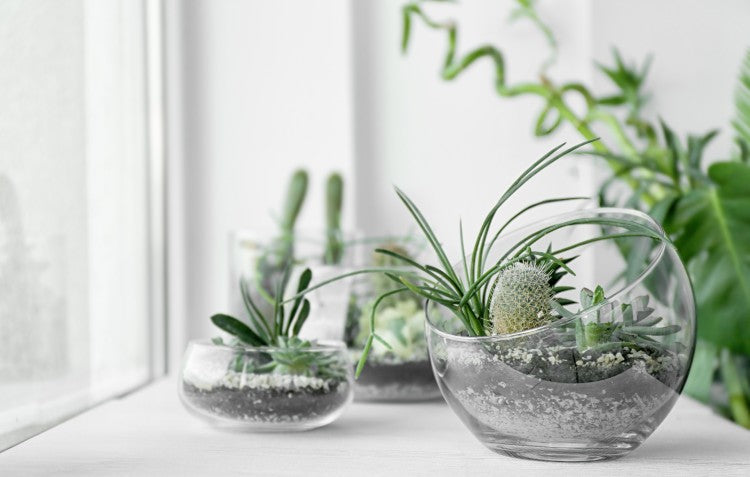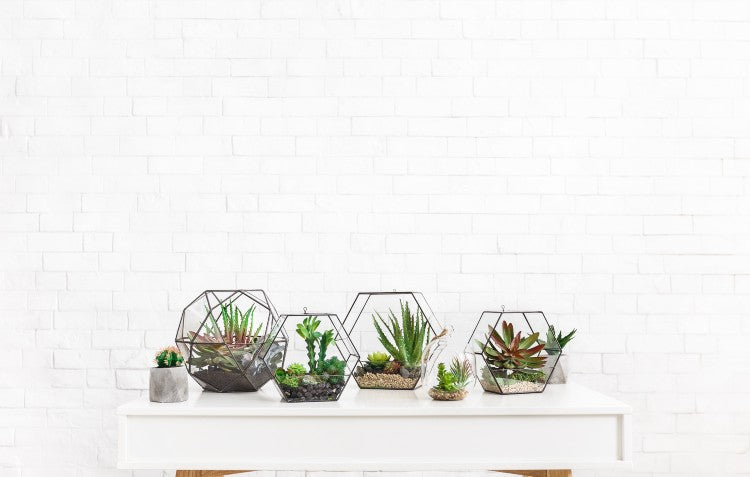Miniature and fairy gardens are becoming increasingly popular these days; you only need to take a quick look at Pinterest to see thousands of different examples. People have become very inventive in finding new ways to use broken pots to create something gorgeous for their outdoor space. It’s the perfect way to avoid sending things to landfill, and it couldn’t be easier to do!
What you’ll need:
- Terracotta pots (different sizes)
- Plants
- Soil/potting mix
- Hammer
- Props
- Hoselink Trowel
Plan your miniature garden
Before you start breaking pots and planting succulents, you may wish to draw up a plan so you can gather the required props and materials. It is easiest to draw a circle then plan out space within it. You can map out where your succulents will go, pebbles, grass and any other props. This will help you in your assembly process, even if it doesn’t go exactly to plan.

Plants
Succulents are the perfect candidate for a mini garden; they are low maintenance and will thrive with proper care. Make sure you put them in quality potting soil that drains well. If you are keeping your mini garden succulents indoors, be sure to keep them free from dust, as this could prevent them from growing. A wipe with a damp cloth every few weeks should do the trick.
When watering, water the soil directly and allow it to soak the soil and drain out. Be sure to only water when the soil has dried out completely; this is usually every two to three weeks. It’s worth noting that succulents will be far less dependent on water during winter, so you may find they can go a month at a time without any water.
Your succulents will need plenty of sunlight and regular rotation to prevent burning. Succulents will also appreciate a healthy dose of Hoselink Garden Fertiliser to help them grow. If you transfer your existing succulents to a new pot, water in some Hoselink Seaweed Tonic to help prevent transplant shock.
If you want to add some extra greenery to your fairy garden, you can add some grass. Regular lawn grass isn’t suitable as it would be almost impossible to maintain, but couch grass is ideal for mini gardens. Alternatively, you can purchase artificial grass for less maintenance. You may want to add a focal point to your mini garden, such as a tiny tree. Herbs such as sage, rosemary, thyme or lavender can work well to create this look.
Pots

For a mini garden, it is best to use one large pot or a selection of broken terracotta pots to create multiple mini gardens. You can even place pots inside one another. Once you have collected your pots of choice, ensure there is at least one drainage hole to allow for water run-off. This is particularly important for the health of your plants. You can have some fun making interesting shapes out of existing cracks in large pots by using a hammer to break them. Try to gently chip away at the pot to create the shape you desire. If it doesn’t work out, don’t worry, you can still use it for another creation.
Assembly
Once you have decided on your miniature garden’s layout, it is recommended you use a dish or plate to create a sturdy base. Start to build piece by piece from the bottom up using a Hoselink Trowel to add the soil. Adding the soil between each layer helps to hold it all together. You may find a bit of unevenness; if this happens, you can add some cardboard to even it out.
Once the pots are assembled, ensure the mini garden is stable. It may be worth adding some extra pieces to make sure it won’t fall apart if it rained. It is a good idea to make sure your soil is damp before transferring your plants as they’ll appreciate the nice moist soil. The Hoselink Comfort 8-Pattern Flow Control Sprayer is ideal for keeping your garden hydrated as it has a handy mist setting that won’t cause the soil to move or your garden to fall apart. If you find any tiny pieces of pot lying around, keep them for decoration. You could create tiny stepping pavers going up the soil in the fairy garden.
Making a terrarium
Like a mini garden, a terrarium is a garden kept within a container, though it’s usually made of glass and kept inside. While you can purchase specially designed glass containers for terrariums, you can also recycle an old glass jar or empty candle holder.
First, clean your jar or glass container, then fill the base with pebbles, followed by activated charcoal, which helps to remove bacteria and keeps the air clean for your plants to breathe. Next, use a layer of moss to cover the charcoal. Finally, you can add your soil and start planting. Succulents are the most frequently chosen plants well suited to this environment. You may wish to use tongs or tweezers to help you assemble your terrarium, depending on the size of the glass container and how small and delicate your plants are.

To care for your enclosed terrarium:
Ensure you do not over-water. If you notice your terrarium becoming foggy, this means it has been over-watered. If your container has no lid, be sure not to underwater by giving your plants a drink every three to six weeks or physically checking when the soil is dry.
Keep your terrarium in a partly sunny spot as it does not require full sun.
Unlike succulents out in the open, succulents in terrariums do not need fertiliser. This is due to the plants being kept in a confined space that you don’t want them to outgrow.
It is possible to grow almost any plant you desire in a terrarium; however, it is important to choose low-light plants that are maintainable and suitable for the conditions.
If you want to get creative, try making a horizontal jar terrarium for an interesting piece of décor. You can use modelling clay to keep the jar from rolling away.

Recycling for mini gardens
If you don’t have access to terracotta pots but still want to make a mini garden, there are plenty of alternatives you can use. Items such as old baking tins, teacups, drawers, wicker baskets and many more. With a variety of options, you can create a mini garden for almost any space.
Mini gardens are great for getting your kids involved, too, as your little ones can learn about gardening on a smaller scale and add their favourite fairies, horses or other ornaments to the space.
Happy mini gardening!











